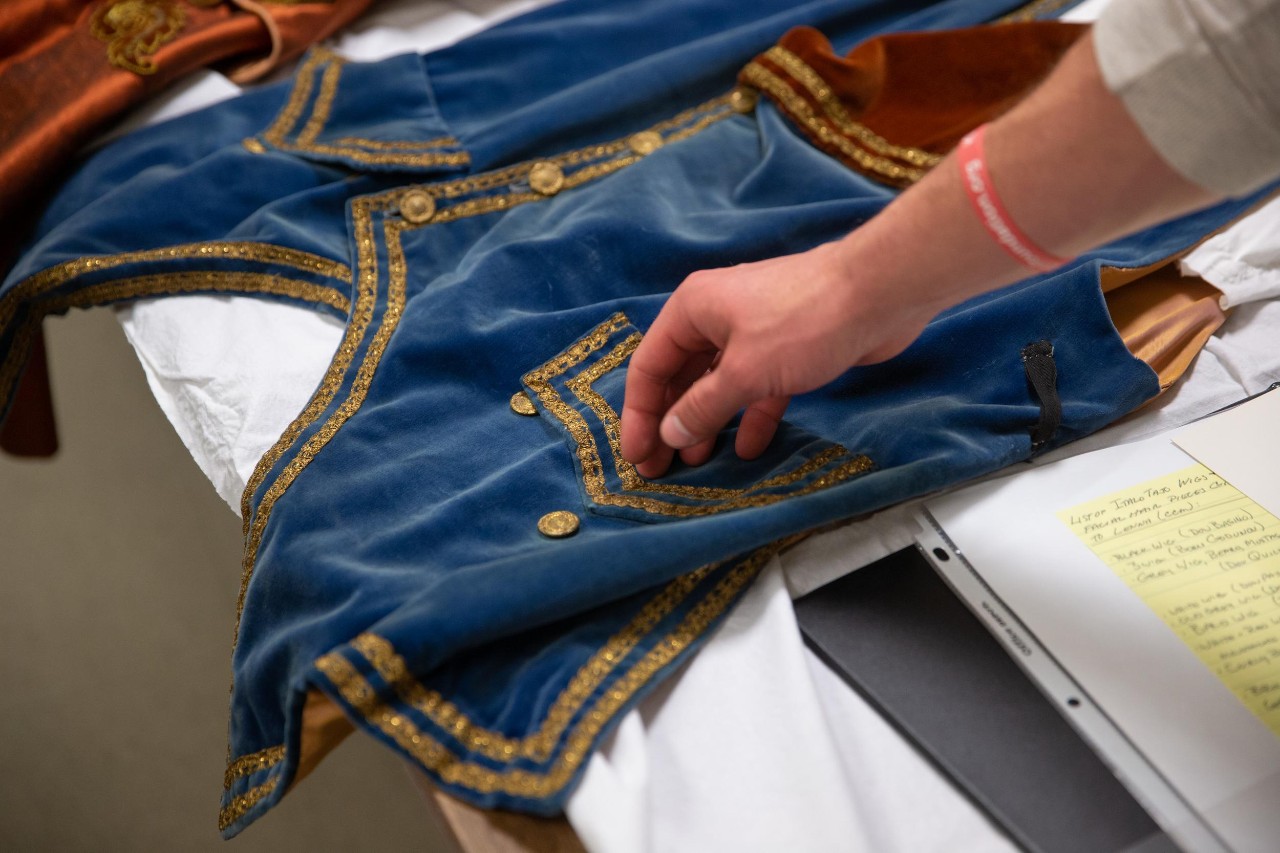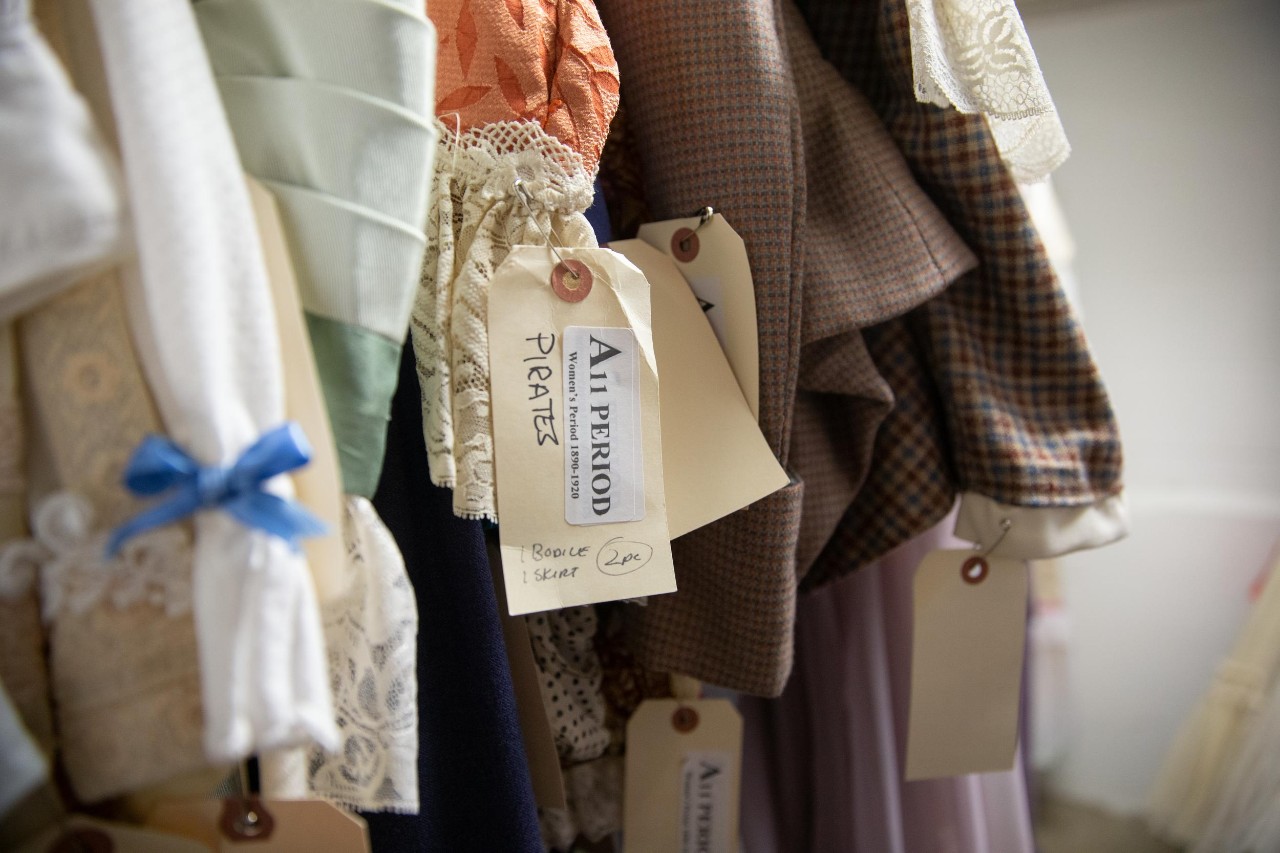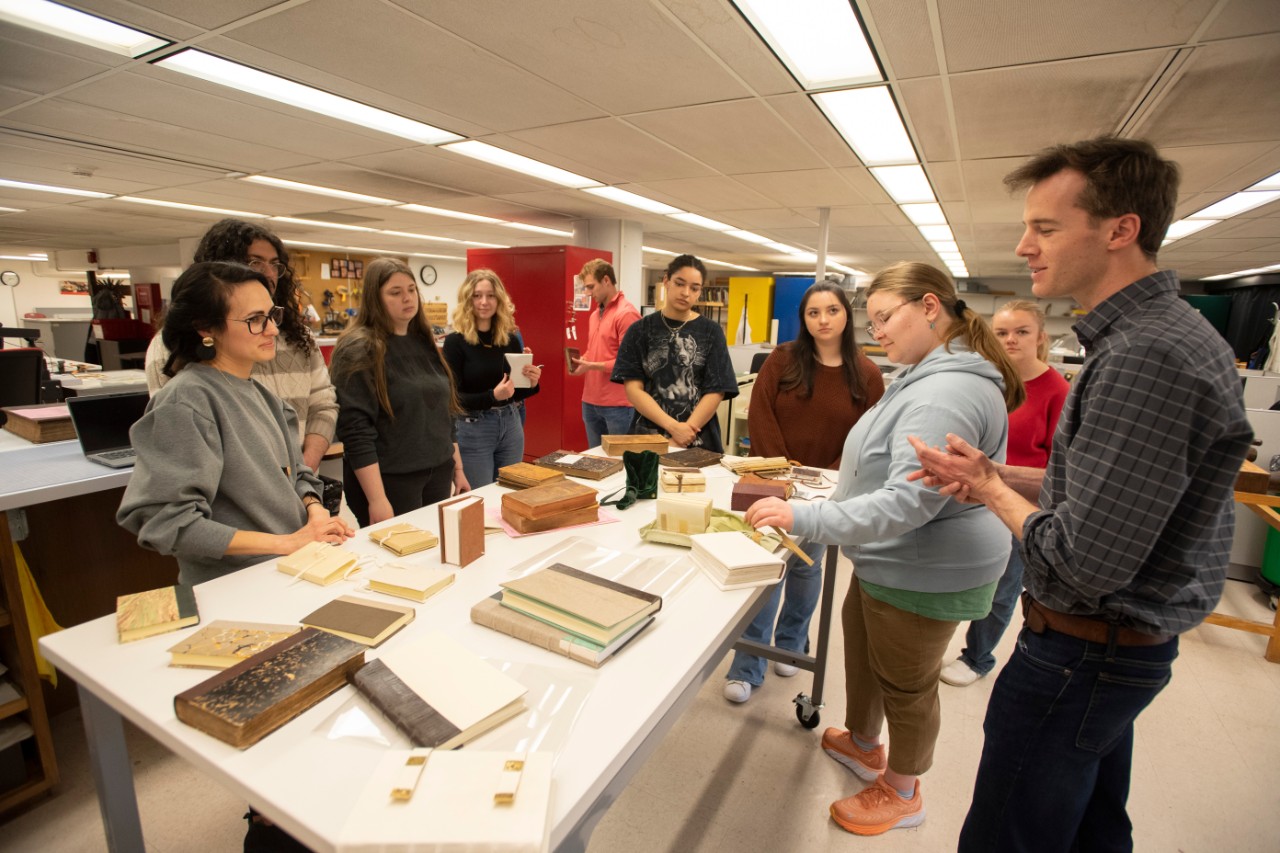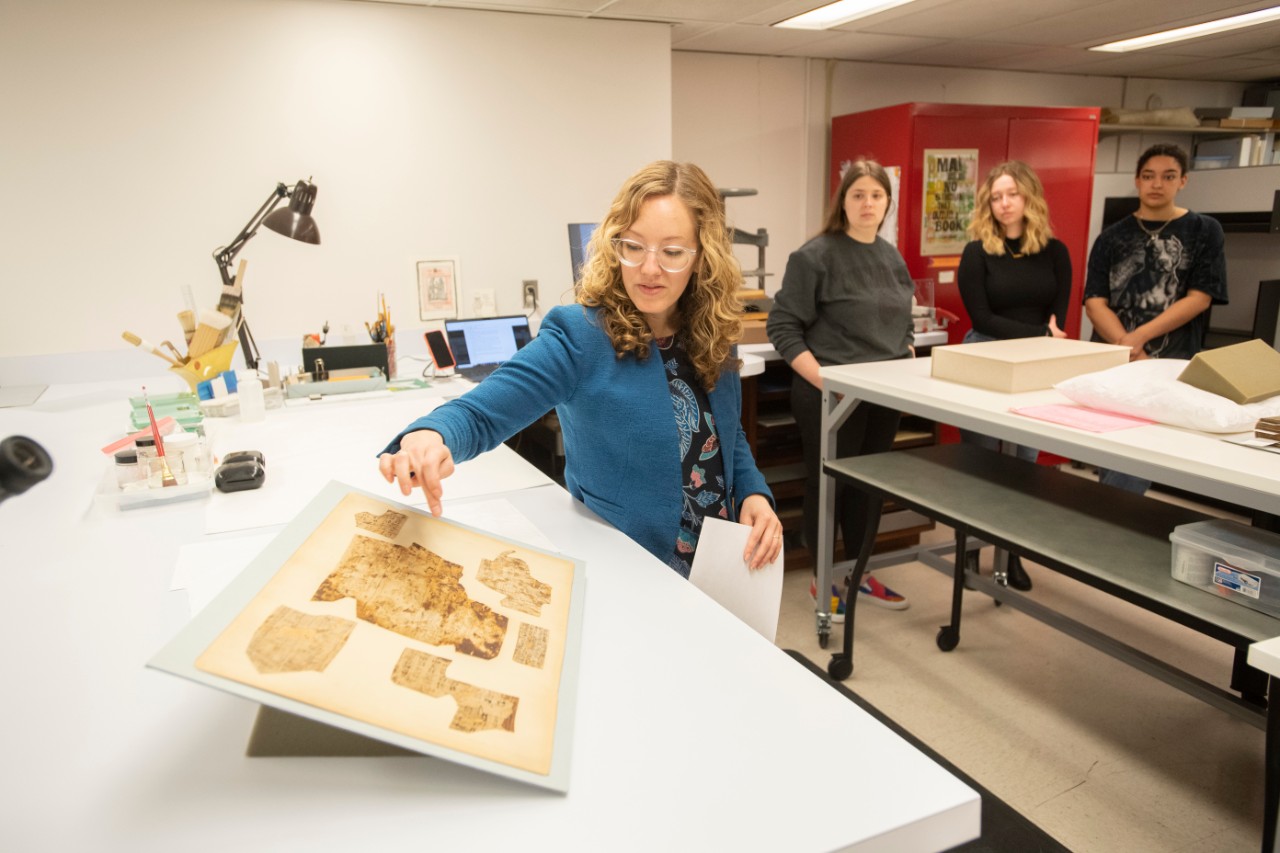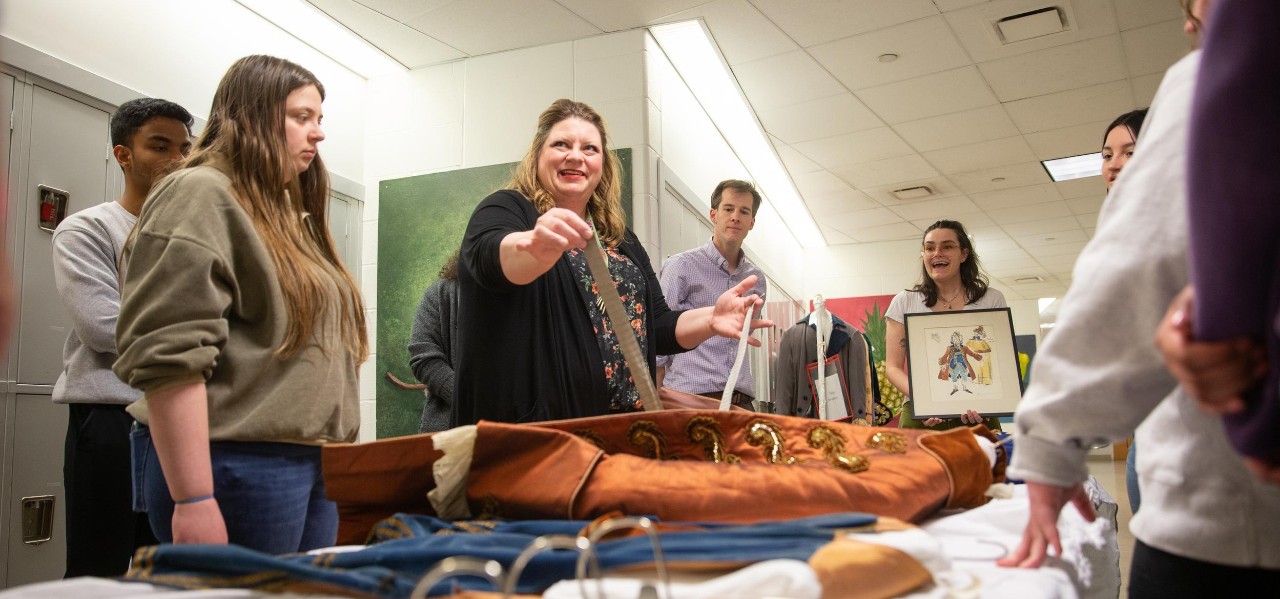
Honors students go where few have gone before, to view UC’s ‘hidden gems’
UC has a plethora of art and artifacts in its collections
As an accounting major, Sophia Staub says she was unsure of what to expect when she signed up for the UC Honors Seminar “Collecting the World: University of Cincinnati Collections, 1819 to Today,” which showcases a treasure trove of art, architecture, scientific instruments, natural history specimens and medical artifacts collected by the university.
“It has been incredible learning about some ‘hidden gems’ of UC, including both the accomplishments of faculty and the unique objects themselves,” says Staub, one of the 11 honors students enrolled in the seminar.
The University Honors Program comprises students academically in the top 7% of UC undergraduates, nearly 1,500 in total across all nine undergraduate colleges.
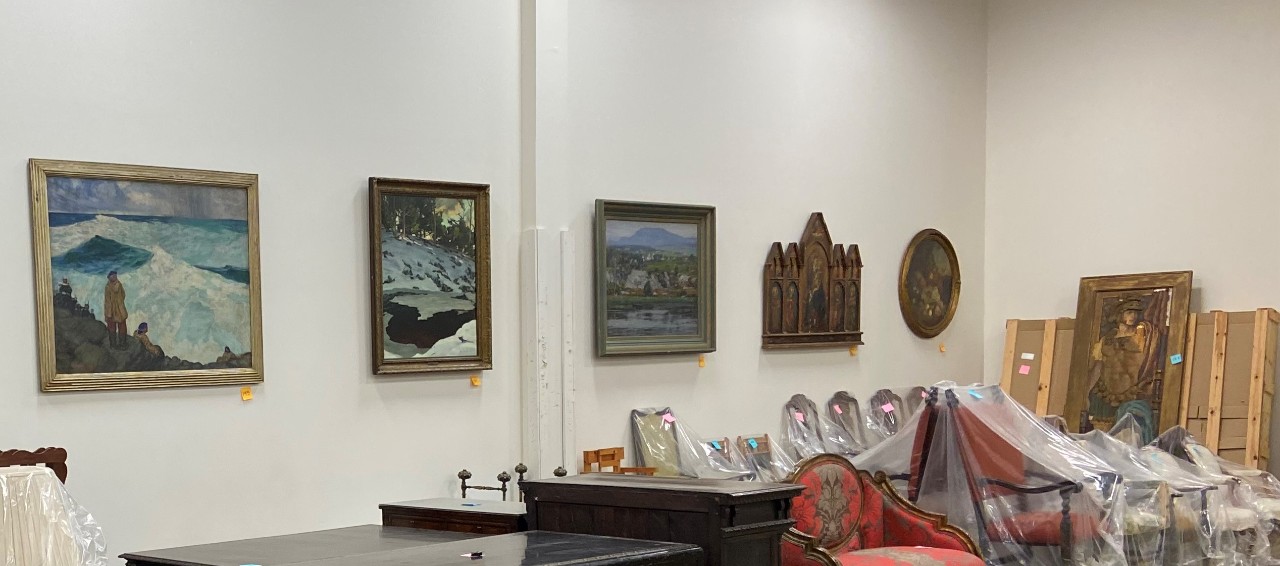
The UC Art Collection is one of the stops on the honors student seminar. Photo/provided by UC Art Collection.
The seminar, piloted by Christopher Platts, an assistant professor of art history at the College of Design, Architecture, Art, and Planning, takes students on visits to various UC collections, archives, libraries and laboratories across campus and beyond.
Consisting of in-class learning and 14 site visits, the course encourages students to encounter everything from an autographed photograph of physicist Marie Curie to astronaut Neil Armstrong’s flight mask to a life-size, marble Venus carved by the emperor Napoleon’s imperial sculptor Antonio Canova.
“We uncover the hidden collections of UC and the hidden stories that accompany many of the items, artifacts, instruments, costumes and other things squirreled away in various buildings, libraries and depositories on campus,” says Platts, adding that almost every department, school, college and library has a special collection related to the history of a given academic field or discipline and to the history of UC.
Since 1819 the University of Cincinnati has collected an amazing variety of tangible things.
Christopher Platts Assistant professor of art history, DAAP
At UC’s College-Conservatory of Music (CCM), for example, there is a vast collection of costumes and accessories from across the decades, some original and some duplicates made for specific opera and theater performances. The students learned, from CCM costume professors and curators, that costume technology involves the realization of the costume designer's sketches, samples, notes, research and fabric swatches, transforming designs into practical, effective and affordable costumes for a production on stage, television or film. Among CCM’s prized possessions is the costume collection of mid-20th century international opera star Italo Tajo, a former UC professor who is known as the father of opera at the college.
Students had the opportunity to personally examine how Tajo’s fanciful costumes were specially constructed for the opera singer to be able to breathe properly and sing and to allow for maximum movement and visibility on stage and how the curators do their best to preserve Tajo’s garments and the thousands of other items in storage at CCM.
“Growing up as a dancer and performer, I was able to almost immerse myself in this collection. I learned more than I could have ever imagined about the ‘behind the scenes’ history, jargon and preservation techniques — it was truly fascinating,” says Straub.
This course just stood out to me because it was more tangible and hands-on, where usually, we just look at art in textbooks.
Ella Emanuel Fine arts student, DAAP
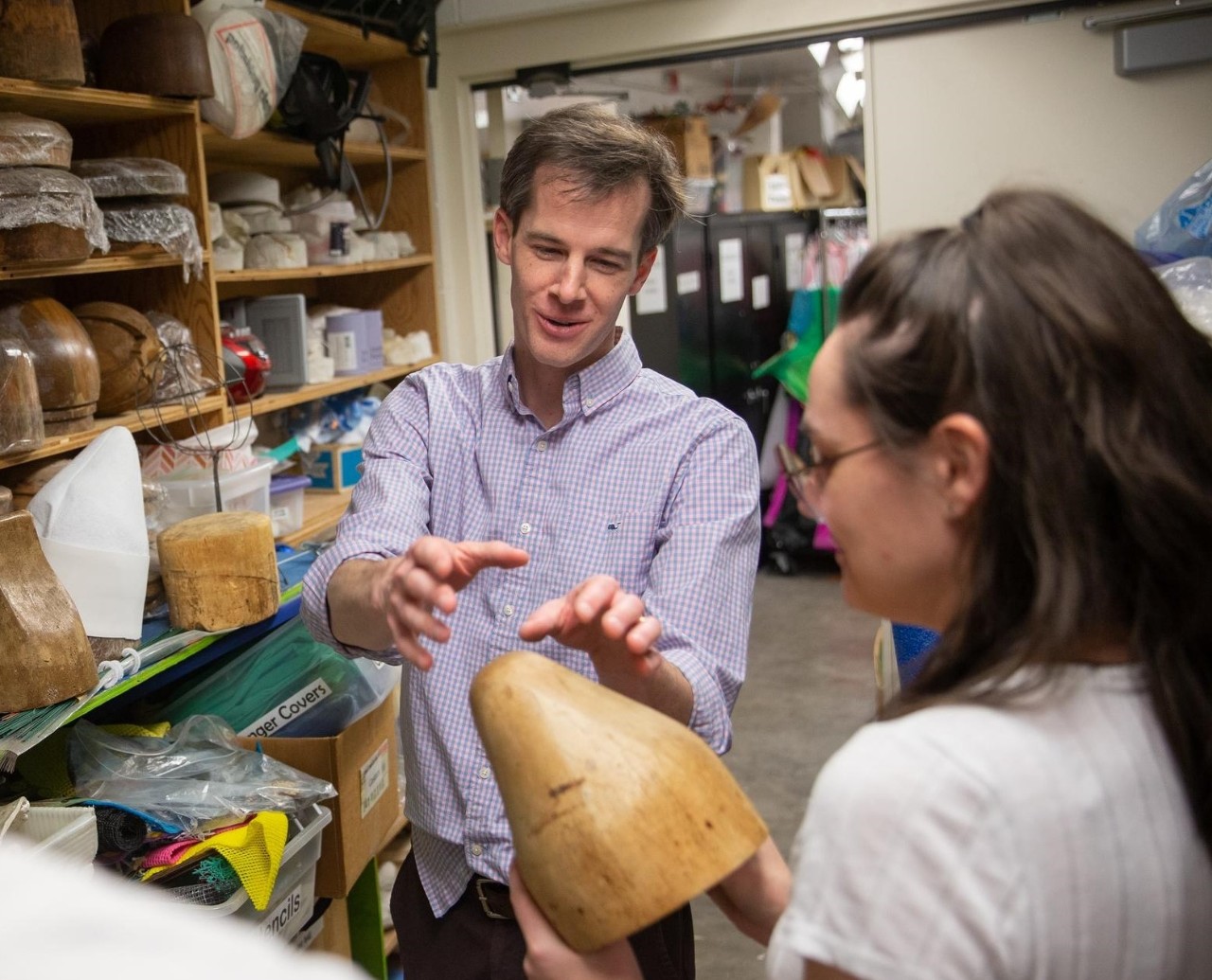
Erin Connelly, a graduate student in costume design and technology, shows course instructor Christopher Platts a hat block. The wooden block is carved into the shape of a hat by a craftsman known as a block shaper. It is used by hat makers and milliners. Photo/Andrew Higley/UC Marketing + Brand.
Classmate Ella Emanuel says she chose the seminar because it related to her fine arts major but was thoroughly surprised at the extent of the UC Art Collection. “This course just stood out to me because it was more tangible and hands-on, where usually, we just look at art in textbooks.” To her delight, she says, she was able to see up close a drawing by the famous Impressionist Edgar Degas, which “normally you wouldn’t see outside of a museum.”
The same can be said for the ancient Egyptian mummy bandages, dating to the 16th century B.C.E. (more than 3,000 years old), that students got to see on their visit to the UC Preservation Lab. The lab is a hybrid partnership between UC and the Cincinnati & Hamilton County Public Library and is chock full of artifacts from across the university and public library’s special collections, including rare books, photographs, documents, coins and the like. The lab is not typically opened to the public, but there will be an Open House the week of May 4.
Says Platts: “We simultaneously investigate how collecting the world, so to speak, is a form of history-making in which the material things we select, classify, study, preserve and display help us understand our place in the universe and motivate us to generate knowledge and tackle global issues.”
On the last day of class April 21, Platts invited Professor Jeff Tilman, associate director of UC’s School of Architecture, to give students a selective walking tour of UC’s campus that focused on how the university has “collected” signature architects during the last three decades: Peter Eisenman’s Aronoff Center for DAAP, Michael Graves' engineering Mantei Center or Frank Gehry Vontz Center for Molecular Studies.

Frank Gehry Vontz Center for Molecular Studies.
“These structures not only transformed the campus into one of the most beautiful in the country, but also have encouraged DAAP and other students to study and experience their surroundings in new ways," says Platts.
Most faculty, students and staff have never heard of these amazing collections and the stories they can tell about UC and its place in the academic world and the wider world, says Platts. “Since 1819 the University of Cincinnati has collected an amazing variety of tangible things.”
Featured image at top: CCM's Elizabeth Payne (center), assistant professor of costume design and curator, shows UC honors students the detailed boning and straps incorporated into a vintage opera costume. Photo/Andrew Higley/UC Marketing + Brand.
Become a Bearcat
Whether you’re a first-generation student or from a family of Bearcats, UC is proud to support you at every step along your journey. We want to make sure you succeed — and feel right at home.
Related Stories
UC 1819 Innovation Hub workshop spreads AI awareness
June 28, 2024
Microsoft and Disrupt Now joined forces to run a June 24-27 seminar at UC’s 1819 Innovation Hub teaching Cincinnati residents how to responsibly use AI.
Free Wi-Fi, work area coming to Greater Cincinnati
June 27, 2024
St. Lawrence Park in Price Hill now has free Wi-Fi and a furnished outdoor space for community members to access digital needs. The space is part of The Nodes Project, which stands for “Neighborhoods of Design Engagement": a collaboration between UC DAAP communication designers and community entities.
Carnegie Foundation recognizes UC with Leadership for Public Purpose classification
June 24, 2024
UC part of inaugural group honored for focusing on developing students as leaders
UC completes $85 million renovation of key residence hall
June 24, 2024
After 18 months of renovation, Siddall Hall will re-open for UC students in August, offering 500 beds on 12 floors of residence hall space. The 112,000 square-foot residence hall will offer new amenities including at ground level 5,000 square feet of fitness space, along with common laundry, common kitchenette and lounge space. Local media got a sneak peek of an updated Siddall Hall.
Environmental engineer researches water treatment solutions
June 21, 2024
Katelin “Katie” Weitzel was first drawn to the University of Cincinnati by the esteemed College of Engineering and Applied Science, but her decision was solidified by the groundbreaking work of Dr. Dionysios Dionysiou in the Department of Chemical and Environmental Engineering. Weitzel’s interest in water treatment came from growing up in Michigan and witnessing firsthand the impact of a water crisis. During her time at UC she has been awarded the Rindsberg Fellowship, a Graduate Student Award in Environmental Chemistry, and recently was named Graduate Student Engineer of the Month by CEAS.
UC grad’s innovative design creates van life 2.0
June 20, 2024
Recktenwald combined his passion for adventure with a desire for versatility to birth Freedom Fans, a startup venture that mixes a camper van’s roof vent with a skylight.
Born to run
June 20, 2024
Former professional athletes have advantages in running for political office, UC’s David Niven tells The Atlantic. Niven, an associate professor in the School of Public and International Affairs, teaches a course on sports and politics.
Engineering’s gender gap narrows
June 20, 2024
UC's College of Engineering and Applied Science has launched the careers of many women across engineering disciplines. With much to celebrate, women say there is still more to do to reach equity in the workplace.
Rising temperatures possibly linked to increased city crime rate
June 20, 2024
Criminal Justice expert J.Z. Bennett interviewed by Fox 19 for his expertise on the relationship between rising temperatures and rise in crime. Bennett says there is no single cause to point to for the rise in crime during a heat wave, but that youth involvement in crime might be due to peer pressure and lack of supervision.
Grace Hall’s journey from National Guard to nursing school
June 18, 2024
As a dedicated member of the Army National Guard while balancing classes at the University of Cincinnati, Grace Hall has navigated a challenging but rewarding path toward her ultimate goal — a nursing degree. Her journey, marked by military service and academic excellence, reflects her unwavering commitment to making a difference in the medical field.

